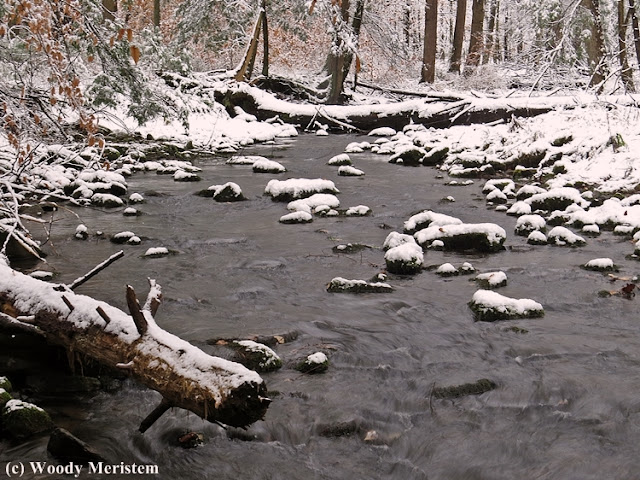Although there were some snow flurries in
early November and a dusting a week or so later, the first time we had what
most of us would call a real snowfall was in the pre-dawn darkness a few days before
Thanksgiving. It still wasn’t much, with only about an inch and a half of heavy,
wet white stuff on the ground. Still, it was enough to prompt a neighbor to
clear his driveway – despite the forecast of 45°F late in the afternoon.
There will be plenty of chances to wield
shovel and snowblower in the coming weeks so I headed to the Big Woods to enjoy
what might best be called a winter wonderland – in spite of the fact that it
was still fall.
During the short drive to my usual parking
place the trees on surrounding hillsides were coated with snow –
From there I walked an old road into the
forest –
That old road passes a line of sugar
maples that, over 100 years ago, shaded a one-room school where the local
children received their education. The building is long gone, but the sugar
maples remain –
Further along, the road swings close to the
stream that drains the valley; the rocks in the stream had a topping of new fallen
snow –
From there I left the road and walked into the forest –
Where the few leaves still hanging from maple twigs also bore a layer of snow –
Small American beech hold their leaves long
into the winter and bear a heavy burden whenever a wet, sticky snow falls –
Speaking of beech, a contorted beech sapling provided a change of view from the otherwise straight trees –
Back along the stream I went, enjoying the
sound of the flowing water and the snow covered logs and rocks –
Time to head for home, passing a picturesque
small hemlock –
And an American hornbeam along the way –
Yes, by late afternoon almost all the snow had melted and the next day there was none.






















